If the surgeon is too aggressive in skin removal, the patient will not be able to close his or her eyes after the operation. This is called cicatricial lagoftalmos, the most feared complication of upper eyelid surgery. In lagoftalmos, the patient experiences tremendous pain, discomfort, eye irritation and constant tearing or watery eyes secondary to corneal irritation and excessive dryness. This is especially bothersome at night, because the patient’s eyes remain half open during sleep. Lagoftalmos can have serious consequences on the patient’s vision and may even put the eye at risk of permanent visual loss.
Eyelid surgery is the most difficult of any facial plastic surgery procedure. The reason is that the eyelids are extremely delicate and complex structures, so any injury to these tissues, surgical or otherwise, may cause significant alterations in their anatomy and function. Eyelid surgery is so different from any other plastic surgery that a whole surgical specialty has been created for this small area of the face, namely, oculoplastic surgery. Oculoplastic surgeons are eye surgeons, i.e., ophthalmologists, who have received special training in plastic surgery of the eyelids. As such, these surgeons always think first about the integrity of the eye when performing cosmetic or reconstructive surgery of the periocular area.
One the main surgeries that occupy an oculoplastic surgeon consists of repair of eyelid surgery complications. This concerns eyelid surgery that has been performed mainly for cosmetic reasons. When facing this challenge, the oculoplastic surgeon has to recover normal eyelid function while trying to achieve an excellent aesthetic result. The goal is to protect the eye and recover its normal shape at the same time.
What are the main complications of cosmetic eyelid surgery?
Complications after cosmetic eyelid surgery are not infrequent and come in different forms. Although there are many possible undesired sequelae from a cosmetic procedure on the eyelids, such as unsightly scars and asymmetry, the most feared complications are related to two things: excision of too much skin resulting in the inability to close the eyes and eyelid retraction causing sever dry eye and corneal exposure.
Complications of upper eyelid blepharoplasty
Complications after cosmetic eyelid surgery are not infrequent and come in different forms. Although there are many possible undesired sequelae from a cosmetic procedure on the eyelids, such as unsightly scars and asymmetry, the most feared complications are related to two things: excision of too much skin resulting in the inability to close the eyes and eyelid retraction causing sever dry eye and corneal exposure.
When upper eyelid skin is lacking after a blepharoplasty, the only option is putting skin back by using a skin graft. The skin is usually recruited from the back of the ears (postauricular skin) because it is the best match in terms of texture, thickness and color. The graft is measured in the operating room, after sedating the patient and sterilizing the surgical site. Upper eyelid skin grafts may look a bit unnatural the first few months after the operation, but the final result is quite remarkable. More importantly, this operation may save the patient’s cornea and prevent irreversible visual loss. Not only that, but the patient’s quality of life is significantly improved. The symptoms of dry eye, which so often represent a true handicap for these people, will be greatly improved or disappear completely.
Complications of lower eyelid blepharoplasty
Lower eyelid blepharoplasty is a surgical technique that aims to improve the appearance of the eyes. It can also have positive effects on overall facial appearance. This operation is performed to remove the aged look of the eyes when bags, wrinkles and dark circles are present. Lower blepharoplasty is a true art form. As such, it requires extreme attention to detail; it is not one size fits all. On the contrary, one may argue that lower blepharoplasty is a different surgery in every patient because so many variables have to be taken into account when deciding the best option.
Complications from lower blepharoplasty come mainly from two sources: failure to correct eyelid laxity during the operation and removing too much skin.
Eyelid retraction secondary to tendon laxity
The eyelids must possess enough elasticity to maintain their normal position and contour. Elasticity is what prevents them from sagging or turning away from the eye. This elasticity is provided by two mechanisms, namely, healthy muscle tone and a strong tendon on the lateral aspect of the eyelids, known as the lateral canthal tendon. Unfortunately, as we age, muscle tone decreases and the tendon loses strength, a phenomenon called eyelid laxity. Eyelid laxity must be evaluated in the preoperative examination of any patient seeking blepharoplasty, especially if the surgeon decides to remove skin. The reason is simple, yet very often overlooked; cutting away skin will pull the eyelid down and away from the eye, unless the tendon has enough elasticity to counteract the pull. Therefore, if the patient’s eyelids show laxity before a blepharoplasty, the surgeon must tighten the lateral canthal tendon during the operation. The name given to that procedure is canthoplasty or canthopexy.
Failure to perform eyelid tightening during a blepharoplasty is the second most common reason why eyelid retraction occurs. Fortunately, it is quite easy to correct when it happens, as long as it is not combined with skin shortage (see below). If the surgeon was cautious in removing skin and the patient experiences mild retraction after the operation, a canthoplasty may be the only procedure necessary to correct the problem. This is not the case when too much skin was cut out.
Skin shortage after blepharoplasty is the main cause of eyelid retraction
When the surgeon decides to remove skin to reduce the number of wrinkles under the eyes, he must always remove less skin than seems necessary. It is extremely easy to remove too much skin in this operation. When that happens, the lower eyelids will retract down and away from the eye, causing exposure of the white part of the eye and an unnatural rounding of its shape. This condition is called cicatricial eyelid retraction. The retraction of the eyelids causes severe dryness of the eye. The patient will experience watering, blurry vision, red eyes and constant burning, especially with air conditioning or when reading.
Treatment of lower eyelid retraction and scarring
There are two ways to correct lower eyelid retraction in this scenario. The first option is to take a skin graft from the skin behind the ear and graft it to the lower eyelids. This works very well to return eyelid function and position to normal, but the result is not aesthetically pleasing. The grafts tend to thicken and become very visible. It is obviously not the best alternative for someone who had lower eyelid blepharoplasty to improve the appearance of their eyes.
A midface lift with drill hole fixation of the eyelid plate is a better option with yields better aesthetic results. The way this surgery works is by recruiting skin from the cheek that is lacking on the lower eyelid, avoiding the need for a skin graft. The eyelid is fixated to the bone on the outer rim of the eye to secure the flap and prevent recurrence of the retraction. This surgery is quite laborious, and the recovery period is long, with significant swelling that may last up to two months. Nevertheless, the results are exceptional as it allows the surgeon to recover eyelid contour and function in the same operation.
For treatment of complications after cosmetic eyelid surgery seek an oculoplastic surgeon
Lower eyelid retraction after cosmetic blepharoplasty is a challenging problem that occurs more frequently than desired. The visual and psychological impacts of this surgical complication are huge, not to mention the costs related to its management. Surgical success depends on a good doctor-patient relationship, which is crucial to manage expectations, and meticulous surgical technique. Attention to detail by the surgeon and collaboration by the patient in his or her postoperative care will increase the chance of a successful outcome.
Although these complications often lead to poor aesthetic results and psychological trauma, an oculoplastic surgeon with experience in reconstructive eyelid surgery is well equipped to face this dauting task and achieve the best and most consistent aesthetic and functional results.
Gallery
Before
After
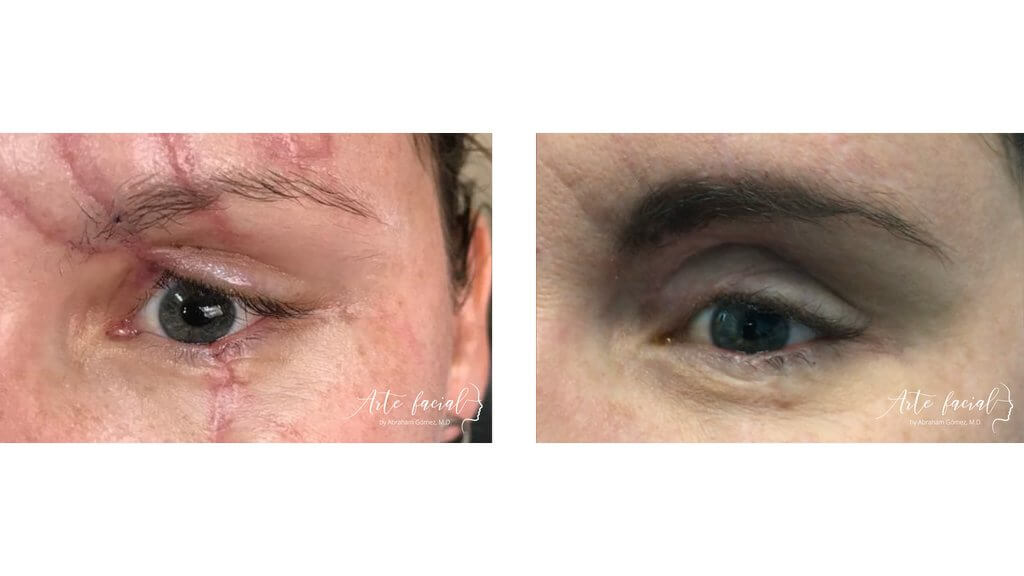
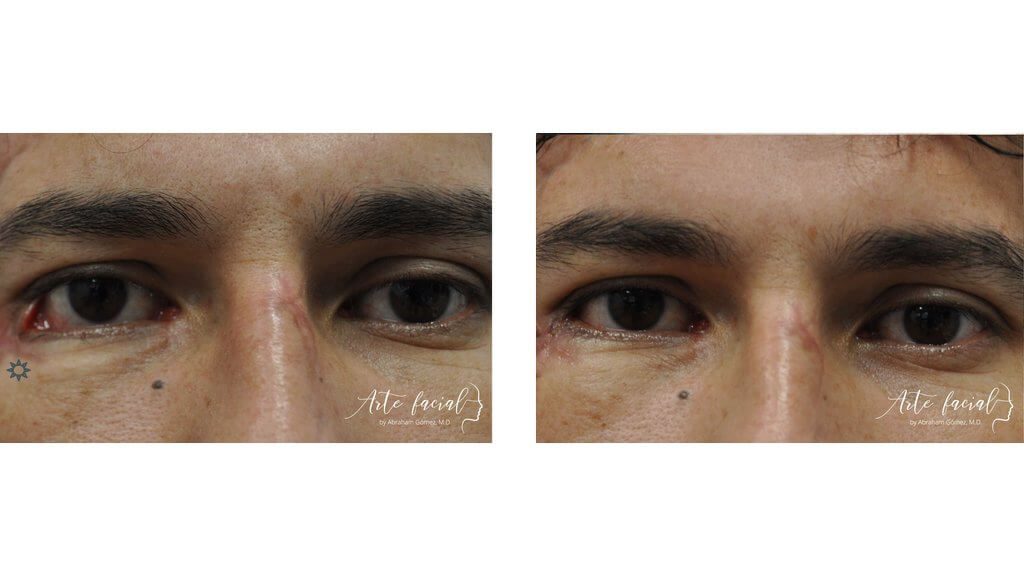
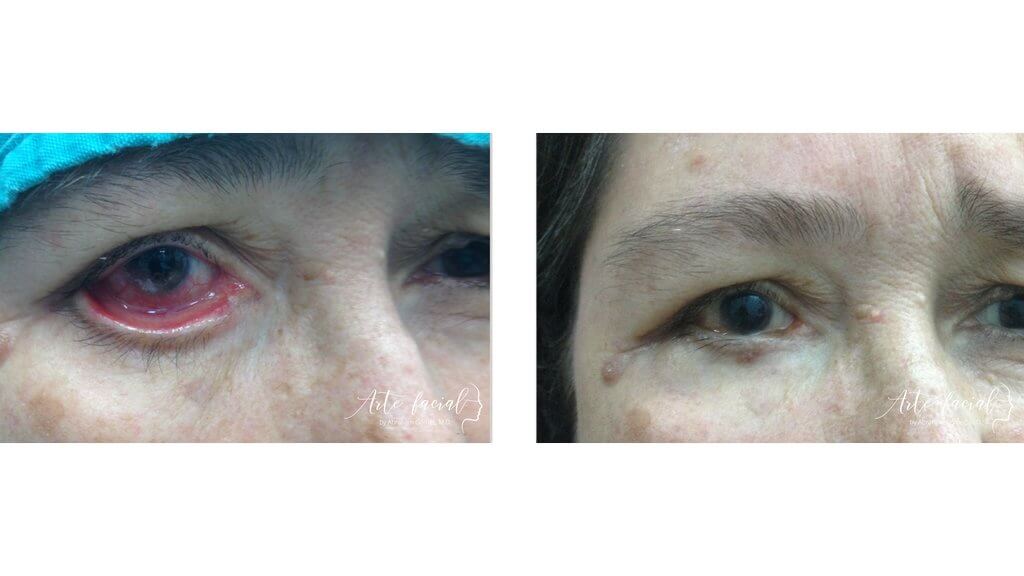
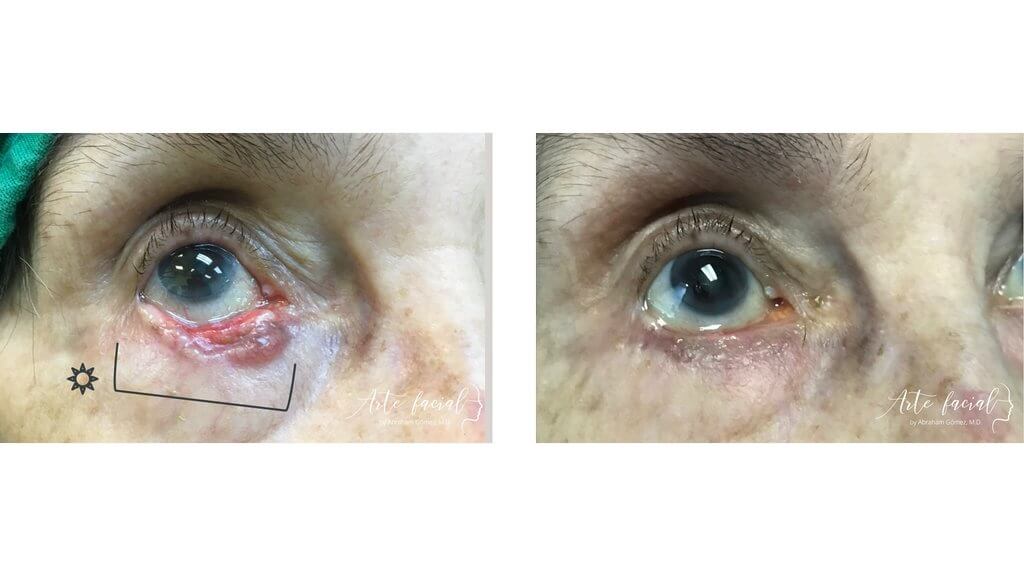
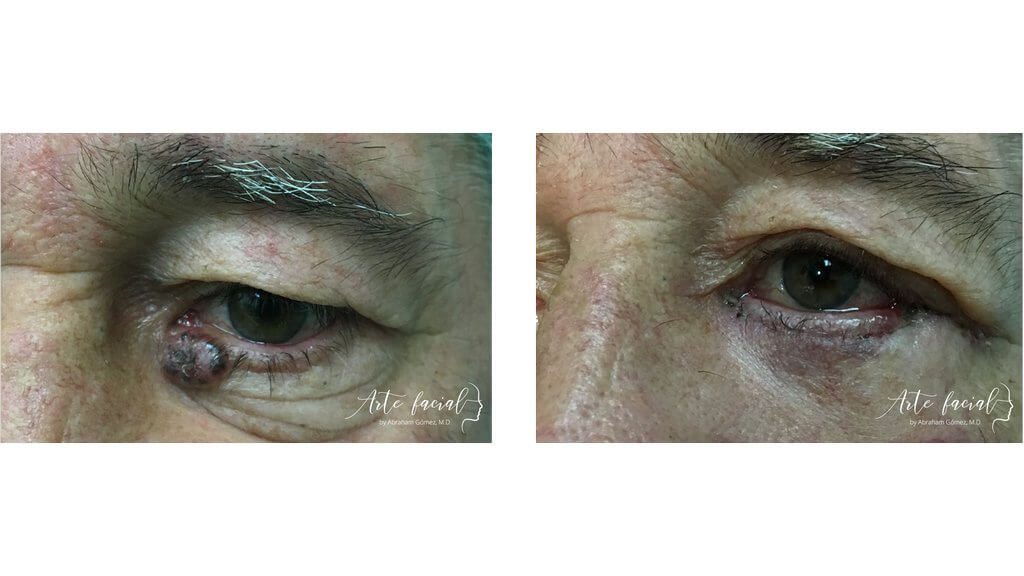










 |
|